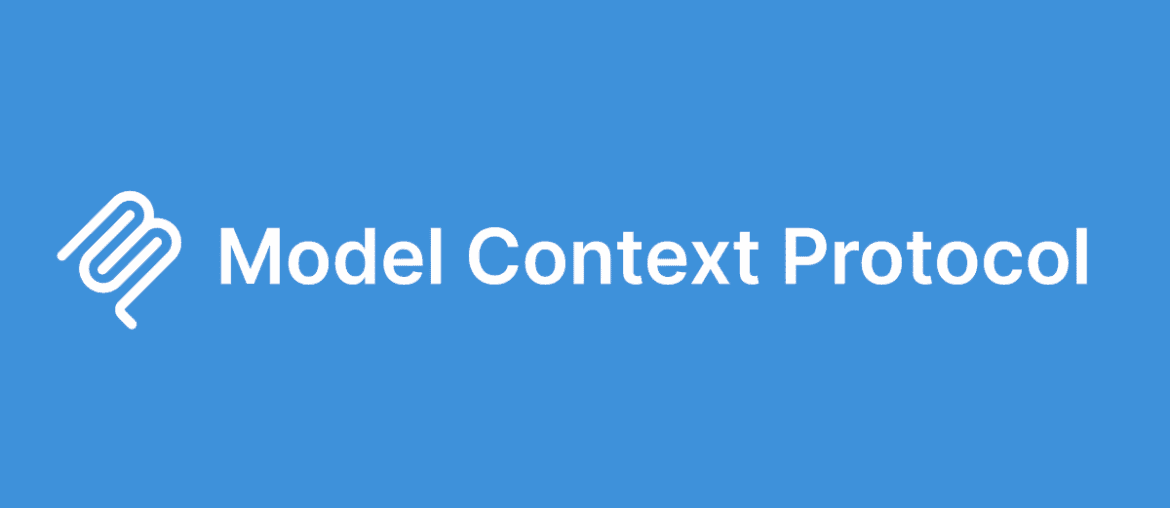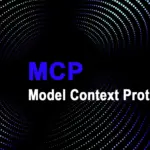Large language models (LLMs) are powerful, but they typically live in silos: they take a prompt, they respond, and they don’t have direct, standardized access to your apps, files, databases, or APIs. That leads to a proliferation of custom “glue code” every time you want your agent to do anything nontrivial.
MCP (Model Context Protocol) was introduced by Anthropic in November 2024 to solve exactly that. It defines a standard protocol by which LLM-driven agents (the “hosts” or “clients”) can invoke tools, fetch context, access external services, and call into your systems, all via a consistent interface.
In short: with MCP, you don’t build bespoke connectors for each LLM + each tool. You build an MCP server exposing your logic or data, and any compliant LLM host can talk to it.
Because MCP is emerging fast, devs are already discussing and deploying real systems around it—on Reddit, HN, and in open-source repos. What you’ll see below is a mix of what’s already live, what people are experimenting with, and what seems to be rising as “killer apps” for MCP.
Core architecture & primitives
Components
- MCP Host / Client: The LLM frontend or agent (e.g. Claude Desktop, Cursor, or your custom agent) acts as a client. It uses MCP to talk to servers.
- MCP Server: A lightweight HTTP or stdio service that exposes tools, resources, and prompts over MCP.
- Transport / protocol: MCP typically uses JSON-RPC 2.0 over stdio or HTTP (with optional Server-Sent Events for streaming).
- Tool / resource / prompt interfaces: Servers define callable APIs (tools), static or dynamic context (resources), and atomic prompt templates.
This architecture resembles the Language Server Protocol (LSP), but for LLM-tool integration.
Why this works in practice
- Interoperability: Once you expose something as an MCP server, any MCP-capable host can use it.
- Composability: Your agent can orchestrate multiple MCP servers (e.g. one for DB, one for Slack, one for your internal API).
- Renewable & evolvable: As your backend evolves, you update your server—no need to rewrite every client.
In what follows, I’ll show you what devs are building right now with these primitives.
Real-world MCP use cases developers are building
Here are several standout examples actively discussed on developer forums, Reddit, and open-source hubs:
Content platform integrations (e.g. Dev.to, Reddit)
Some devs have built MCP servers that let agents read, search, and even write to blogging / social media platforms.
- A Dev.to MCP server allows agents to fetch recent/trending posts, search by tag or author, and post new articles.
- A Reddit MCP server has also been built (demonstrated in video form) to enable LLM agents to fetch posts/comments or interact with Reddit through MCP.
These are powerful because they turn passive reading + summarization into active integration: your agent can now post or comment programmatically, respecting contexts and patterns.
Dev tools & browser integrations
- A Chrome DevTools MCP server is in preview. It gives agents debugging capabilities (e.g. start a performance trace, inspect DOM, fetch metrics) by bridging DevTools to MCP.
- On the “top MCP servers” lists, several developer-centric tools appear: file system access, GitHub integration, Playwright (browser automation), and UI generation servers.
- GitHub itself published an open-source MCP server to serve as a bridge between GitHub functionality and LLM agents (e.g. create PRs, inspect issues).
Multi-agent / orchestration & tool discovery
- Some community projects build proxy/aggregator MCP servers that consolidate many tool servers behind a unified interface (so the host sees one “super server” rather than dozens). E.g.
pluggedin-mcp-proxyin the “awesome MCP servers” list. - The new GitHub MCP Registry is being introduced as a central directory where MCP servers can be discovered, installed, and managed from within dev tools (e.g. VS Code).
- On the research frontier: Code2MCP, a system that automatically transforms arbitrary code repositories into MCP services via an agentic “run-review-fix” loop. That could dramatically scale MCP adoption.
Security, auditing, and evolution
- Researchers have already started analyzing MCP servers for novel vulnerabilities. One study (“MCP Safety Audit”) showed that misuse of MCP can lead to credential theft, remote code execution, and exploit chains.
- A related paper studied maintainability across thousands of open-source MCP servers, identifying tool poisoning vulnerabilities and code smells specific to the MCP paradigm.
- A more recent work highlights parasitic toolchain attacks, where malicious constructs embedded in data sources leak private data through chained MCP tool calls.
These indicate that if you use or build MCP servers, you must treat them as high-risk attack surfaces.
What devs say: Reddit & HN voices
When browsing Reddit (e.g. r/mcp) or threads on Hacker News, you’ll see themes and challenges:
- Session and state handling: Many developers note that managing session state (user identity, tokens, persistent context) across stateless HTTP/JSON-RPC is surprisingly tricky in practice. One Reddit thread titled “Everything I learned building a remote MCP server” dives into this challenge.
- Streaming vs HTTP: Developers observe that SSE or streamable HTTP is often better than polling or synchronous calls, especially for long-running tasks.
- Abstracting away complexity: Some devs adopt SDKs like
mcp-goto shield them from boilerplate, but still appreciate understanding underlying mechanics. - “This is just the beginning”: Comments often frame the MCP ecosystem as nascent, messy, but with explosive potential (especially around agent workflows, tool orchestration, and domain-specific servers).
- Tool fragmentation and discoverability: A recurring gripe is that MCP servers are scattered across GitHub repos, making them hard to find and adopt—hence excitement about the new registry (mentioned earlier).
These voices collectively validate that what you’re about to build is not just academic; people are actively struggling and iterating in this space.
Tutorial: Building a simple MCP server (Python + FastMCP)
Prefer Next.js? We have a guide for that!
Below is a lean but functional example of building a simple MCP server in Python using FastMCP (a popular Python library). We’ll expose a toy “wiki lookup” tool and a prompt template.
Prerequisites
- Python ≥ 3.10
fastmcplibrary- A running server environment (e.g. DigitalOcean droplet)
- (Optional) Tunnel / reverse proxy if testing locally
Install:
pip install fastmcpserver.py
from fastmcp import MCPServer, tool, prompt, Resource
app = MCPServer()
@tool
def wiki_lookup(query: str) -> str:
# In real life, call Wikipedia API
# Here, dummy stub
return f"Result for '{query}': (pretend this is a snippet from Wikipedia)."
@prompt
def summarize_topic(topic: str) -> str:
return f"Summarize the key points about {topic}."
# Optionally define a resource (static or dynamic state)
wiki_cache = Resource(initial={})
if __name__ == "__main__":
app.run(host="0.0.0.0", port=8080)You can start this server:
python server.pyThis gives you an MCP server listening over HTTP. The host can then call wiki_lookup or request the summarize_topic prompt.
Configure host to use it
Example mcp.json (for Cursor or similar):
{
"mcpServers": {
"wiki": {
"command": "python",
"args": ["server.py"],
"endpoint": "http://YOUR_SERVER:8080"
}
}
}After restarting your host (e.g. Cursor, Claude Desktop), it should detect the wiki server and allow you to send prompts invoking those tools.
Example request (via HTTP)
If you want to test manually, call the JSON-RPC endpoint:
curl -X POST http://YOUR_SERVER:8080/jsonrpc \
-H 'Content-Type: application/json' \
-d '{
"jsonrpc": "2.0",
"id": 1,
"method": "tool_call",
"params": {
"tool": "wiki_lookup",
"args": {
"query": "Quantum mechanics"
}
}
}'You’ll get a JSON-RPC response with the stubbed answer.
Enhancements & tips
- Use SSE / streaming if your tool might stream (e.g. long lookup, large execution).
- Add authentication / token validation to guard tool access.
- Implement rate limiting, error handling, retries.
- Maintain state or session context if your tasks need multi-step workflows (e.g. user logs in, then you fetch personalized data).
- Modularize tools, resources, and prompts into separate files for maintainability.
Once you have this scaffold, you can progressively add more sophisticated servers (GitHub, internal APIs, browser automation, etc.).
Deployment, orchestration & workflows
Here’s how people commonly evolve beyond the toy server:
- Containerization: Package your server as a Docker container, deploy via Kubernetes or serverless container platform.
- Proxy / gateway layer: Use an aggregator MCP server (like
pluggedin-mcp-proxy) to unify multiple downstream MCP servers under one front door. - Registry integration: Publish your server to the GitHub MCP Registry so hosts can discover it via GUI inside dev tools.
- Access control: Tie each tool/resource to permission scopes (user-level tokens, allowlists) so the agent cannot misuse or overreach.
- Orchestration agents: Write meta-agents that coordinate multiple MCP servers—e.g. chaining a database lookup, a compute step, and a notification—and present the result to the LLM.
Security, risks, and mitigation
Because MCP turns your LLM into a tool orchestrator, it significantly expands the attack surface. Here’s what the research warns:
- Prompt injection chaining: A malicious prompt inserted via one tool can “infect” downstream tools, provoking them to divulge secrets. (arXiv)
- Credential theft / malicious code execution: If your server inadequately restricts tool execution, an LLM could exploit it to run arbitrary shell commands. (arXiv)
- Tool poisoning: Some MCP servers allow unverified tool definitions; adversaries can craft “bad tools” that perform unwanted operations. (arXiv)
- Parasitic toolchain attacks: A more advanced form where malicious logic lives in data pipelines, not overt tool definitions. (arXiv)
Mitigations:
- Always enforce least privilege: every tool should have the minimal access needed.
- Sanitize and validate inputs passed between tools and prompts.
- Use auditing, logging, and runtime guards (e.g. sandboxing, rate limits).
- Run security scans like MCPSafetyScanner (open-source tool) before deploying a server.
- Segregate critical data and operations behind safer interface layers (no direct DB shell access, for example).
Treat your MCP server as part of your attack surface; build it accordingly.
What’s next—what you can try, and what’s exciting
- Clone or examine open MCP servers (Dev.to, GitHub, pluggedin proxy) from awesome-mcp-servers lists.
- Build simple servers for your own internal APIs (e.g. CRM, analytics, observability), then hook them up to an LLM host.
- Experiment with orchestration: build a “workflow MCP” that chains tools (e.g. fetch → transform → publish).
- Stay tuned to the GitHub MCP Registry for future discovery improvements.
- Watch emerging research (Code2MCP especially) since it might automate much of the MCP conversion workload for repositories you already manage.
Summary & roadmap
You’ve now seen:
- Why MCP exists: to reduce integration friction across models and tools
- Core architecture: host, server, tool, prompt, transport
- What devs are building: integrations with content platforms, browser/devtools, orchestration layers, and registries
- How to build your own server: with a Python/FastMCP minimal example
- Security considerations: major risks and mitigations
- Where the space is headed: registry, automatic conversion, agent composition










